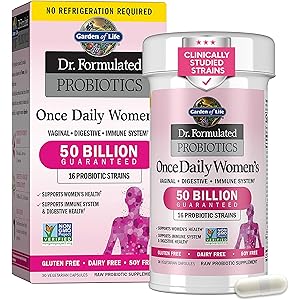Garden of Life Once Daily Dr. Formulated Probiotics for Women 50 Billion CFU 16 Probiotic Strains with Organic Prebiotics for Digestive, Vaginal & Immune Health, Dairy Free, Shelf Stable 30 Capsules
$32.17 (as of May 19, 2025 11:59 GMT +00:00 - More infoProduct prices and availability are accurate as of the date/time indicated and are subject to change. Any price and availability information displayed on [relevant Amazon Site(s), as applicable] at the time of purchase will apply to the purchase of this product.)Understanding the USDA Dietary Guidelines
The USDA Dietary Guidelines serve as a comprehensive framework designed to promote health and prevent chronic diseases through informed dietary choices. These guidelines are updated every five years, reflecting the latest scientific research and nutritional knowledge. They aim to provide clear recommendations for individuals and families, helping them make healthier food and beverage choices.
The Importance of Nutritional Guidelines
Nutritional guidelines, such as the USDA Dietary Guidelines, are essential for public health. They provide evidence-based advice that helps individuals understand the relationship between diet and health. By following these guidelines, people can reduce their risk of obesity, diabetes, heart disease, and other diet-related conditions, ultimately leading to a healthier population.
Key Components of the USDA Dietary Guidelines
The USDA Dietary Guidelines encompass several key components, including recommendations for fruit and vegetable intake, whole grains, lean proteins, and low-fat dairy. These components are designed to ensure a balanced diet that meets the nutritional needs of individuals at various life stages. The guidelines also emphasize the importance of limiting added sugars, saturated fats, and sodium.
MyPlate: A Visual Representation
One of the most recognizable tools derived from the USDA Dietary Guidelines is MyPlate. This visual representation helps individuals understand how to create balanced meals by dividing the plate into sections for fruits, vegetables, grains, and proteins. MyPlate encourages portion control and variety, making it easier for people to visualize their dietary choices.
Target Audience of the USDA Dietary Guidelines
The USDA Dietary Guidelines target a wide audience, including individuals, families, healthcare professionals, and policymakers. By providing clear and actionable recommendations, the guidelines aim to empower people to take charge of their health. They also serve as a resource for nutrition educators and health advocates working to improve community health.
How to Implement the Guidelines in Daily Life
Implementing the USDA Dietary Guidelines in daily life involves making conscious food choices that align with the recommendations. This can include planning meals that incorporate a variety of food groups, reading nutrition labels, and being mindful of portion sizes. Small changes, such as swapping sugary drinks for water or choosing whole grain options, can lead to significant health improvements over time.
Challenges in Following the USDA Dietary Guidelines
Despite the clear benefits of following the USDA Dietary Guidelines, many individuals face challenges in implementation. Factors such as food accessibility, cultural preferences, and economic constraints can hinder adherence to these recommendations. Addressing these challenges requires a multifaceted approach that includes education, community support, and policy changes to improve food environments.
Updates and Changes in the Guidelines
Every five years, the USDA reviews and updates its dietary guidelines based on the latest research. These updates reflect changes in scientific understanding of nutrition and health, as well as shifts in public health priorities. Staying informed about these updates is crucial for individuals and health professionals to ensure they are following the most current recommendations.
The Role of Technology in Dietary Guidance
Technology plays an increasingly important role in disseminating the USDA Dietary Guidelines. Mobile apps, websites, and social media platforms provide accessible information and tools for individuals to track their dietary habits and receive personalized recommendations. This technological integration enhances the ability of individuals to engage with the guidelines and make informed choices.
Future Directions for Dietary Guidelines
Looking ahead, the USDA Dietary Guidelines are expected to continue evolving in response to emerging research and public health needs. Future guidelines may place greater emphasis on sustainability, food equity, and the impact of diet on the environment. By addressing these issues, the guidelines can further support the health of individuals and the planet.


